Syrian hamsters are the most common species of hamster there is to find (and the largest). At pet stores, they are often referred to as Panda Bear hamsters, Golden hamsters, Black Bear hamsters, and Teddy Bear hamsters. These are just nicknames to draw attention, but they are really just Syrians. They make great pets, as they are calmer and friendlier than other smaller hamster varieties. Syrian hamsters are well-suited for young children or first time hamster owners and it is fairly easy to learn how to take care of them properly, although they do require gentle handling.
1Preparing to Bring Your Hamster Home

1Buy a cage. A good cage for a Syrian hamster is a cage larger than 600 square inches, although 450 square inches of floor space is the minimum. This might seem like a lot, but imagine living in tiny room your whole life. Never give your Syrian a cage any smaller than that because they will be severely cramped. Most pet store cages are too small; instead try a 40 gallon (151.4 L) long tank, a bin cage, or a DIY cage. Remember, a cage that is too small will lead your hamster to extreme boredom and severe stress. It doesn’t matter if you see a cute cage at a pet store and think it must be okay because they’re selling it there. The only exception to small cages is if you buy three or four and connect them together with tubes. Most cages at pet stores are too pricey anyways.
- It’s best to avoid “starter cages” or “beginner cages”; these are much too small. Instead, purchase a cage suitable for the hamster’s entire lifespan at the start, as this will save you money and bring much stress-relief in the future.
- The 450 square inches of floor space does not include levels. Solely the ground floor must be 450 sq in. Levels do not count. Try to buy a cage bigger than this though, as hamsters need as much space as you can give them. No cage is ever too big.

2Get bedding for the cage. Remember that safe bedding is a must. Do not use sawdust, pine, or cedar (and any other wood-based) bedding because the oils from these wood types are harmful to your hamster. Avoid cotton as well. This could clog up your hamster’s intestines and kill him, and it may also catch on your hamster’s legs and break them as he tries to pull free. Use shredded paper, brands like Aspen, Care Fresh, Boxo , and Katyee. These are the most commonly found in pet stores. They keep odors down, are clean and cozy.
- Sawdust should be made from untreated wood. When buying it at a pet store, check that the packaging says “untreated.” Do not purchase sawdust from a wood mill or carpenter, as this wood is probably treated with chemicals that can be toxic to hamsters. Pine and cedar bedding is also dangerous for a hamster. Bedding should be deeper than 7 inches (17.8 cm). This might seem like a lot, but hamsters dig huge tunnels in the wild, and just a few inches will not allow a hamster to do this. Some hamsters will also only dig if they have a certain height of bedding, so make sure to give your hamster plenty of space, even if it doesn’t seem like tunnels are being made.
- Cotton or string “fluffy” bedding types are extremely dangerous. These types of bedding kill thousands of pets even if the package says it’s safe. The risk is that strands of bedding fiber get caught around a leg, then tighten to cut off the hamster’s circulation. It will also more than likely break your hamster’s fragile bones as it tries to struggle free. The leg becomes gangrenous and the hamster is too sick to withstand surgery. In some cases the hamster has to be euthanized on humane grounds.
- A great nesting material is toilet paper. Don’t get anything with fragrances. You can shred/rip it to small pieces and place it around the cage or in the hamster house. Note that this is not a replacement for regular bedding.
- Avoid cedar, redwood, and pine bedding, as they contain resin dust that can irritate your hamster’s respiratory system. Aspen and Care Fresh are perfectly safe and comfortable options for hamsters.
- You should also avoid any bedding materials coloured with inks or dyes as they may be harmful to your hamster’s health if eaten.
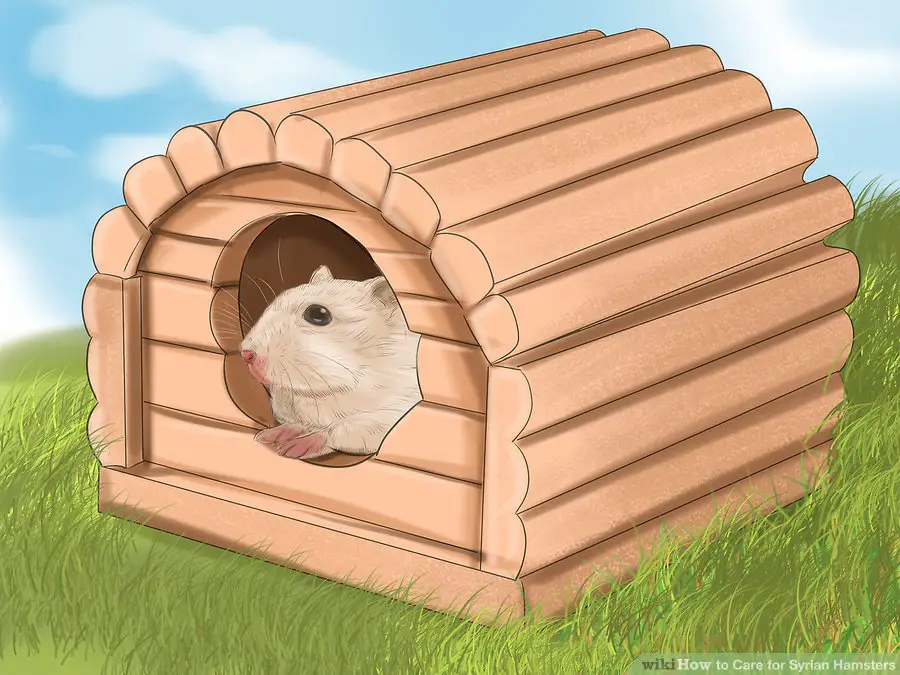
3Buy a “hamster house” for your hamster to stuff with nesting material so it feels safe and cozy. Plastic houses should not really be used as, if a hamster chews on it, it can be toxic. Even if it doesn’t look like a hamster is chewing his/her house, plastic is unnatural. Wooden houses are a lot nicer for a hamster, and a hamster can chew on them, which will wear down their teeth. A hamster house is a must-have, so don’t skip over it. A hamster, in the wild, lives in a “den” or a “burrow”. It spends all of its day sleeping inside there, where it feels safe and protected from any threat. It also stores its food in its house. Note that some hamsters prefer to sleep beneath their wheel, but you still need a house.
- Some people use hutches made for guinea pigs and rabbits for their hamsters, but these are good if you have a pregnant female that needs lots of space and won’t want to climb all over her cage.
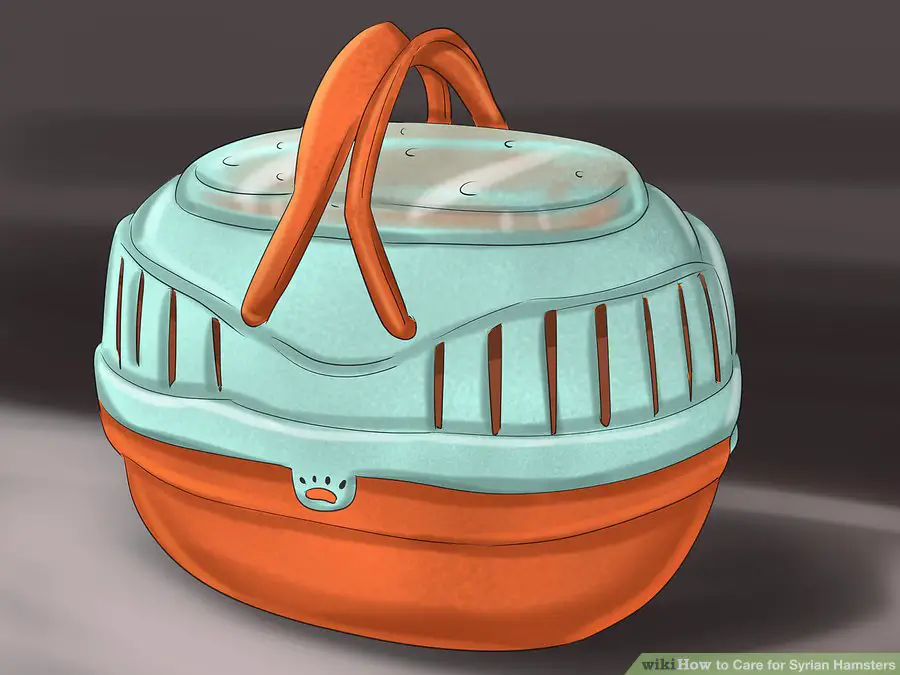
4Buy a carry case. Most pet stores offer cardboard boxes, but hamsters can chew right through them. Buy a carry-case made for Syrians. Cheap ones with lids that come right off and are easy to escape from are no good; you’ll need to purchase a proper carry case from a pet shop. They will be a much more expensive option, but also the better option, as this can be re-used whenever you need and are escape-proof. Do not bring your new hamster home in its cage.
- It is also useful to have a reliable carry case at home, for those times when you need to transport the hamster safely to the vet.
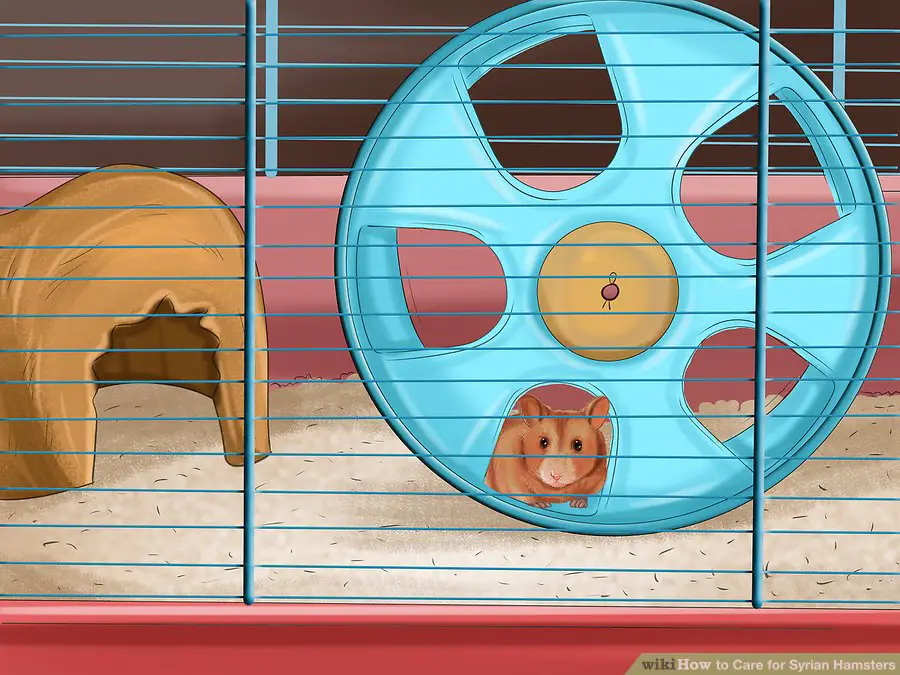
5Buy wheels and accessories. Wheels and accessories, like Hideaway Huts, made for Dwarf hamsters and mice are far too small for Syrian hamsters! Allow the hamster to have plenty of room to move around in, and make sure you have an 11-12 inch wheel; Wodent Wheels are best.
- When buying a wheel, visualise an adult sized Syrian hamster inside. Your pet needs to be able to run on the wheel with its back straight. A Syrian hamster’s wheel needs to be 10–12 inches (25.4–30.5 cm) in diameter. If the wheel is too small, the central spoke will cause the hamster to flex in the wrong direction (its back makes a “U”). If in doubt, buy the largest wheel that will fit in the cage, such as a rat-wheel. Also, make sure that your wheel isn’t made of wire or mesh material, because this can cause bumblefoot.
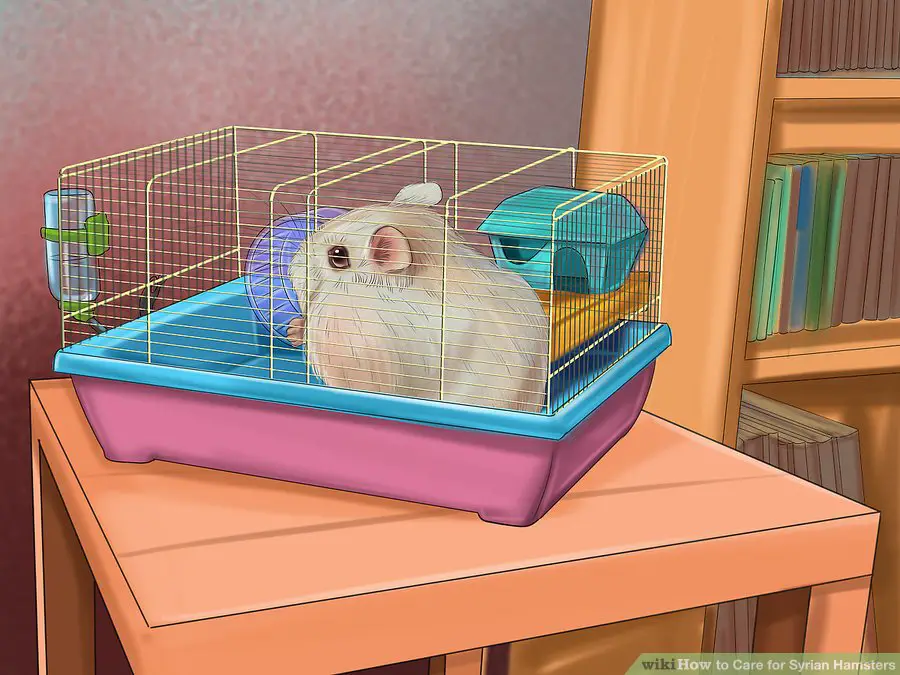
6Locate the hamster’s cage in a quiet place. Your hamster needs quiet to avoid stressing it with loud, sudden sounds. Keep the cage is out of the full sun, and do not keep hamster cages in a room where food is prepared.
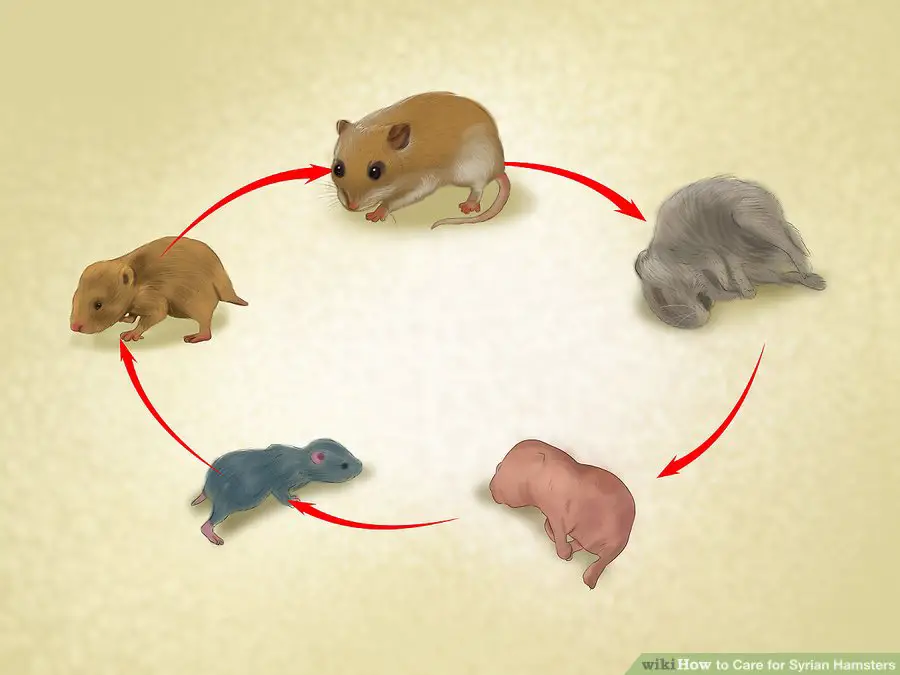
7Be prepared for your hamster to live 2 to 3 years. The average age is about 2 years. Let your hamster sleep as it gets older, and be prepared for vet trips, as older hamsters are prone to illness. If you have young children, and an older hamster becomes sick, take care to explain to them that the hamster is very old and may not recover, rather than get their hopes up.
2Settling Your Hamster into its New Home

1Bring your Syrian hamster home straight from the store without detours.Transfer the hamster from the carrier to the cage, which should be set up beforehand. Leave the hamster alone after you put it in its cage, so that it can explore its new home and become used to it.
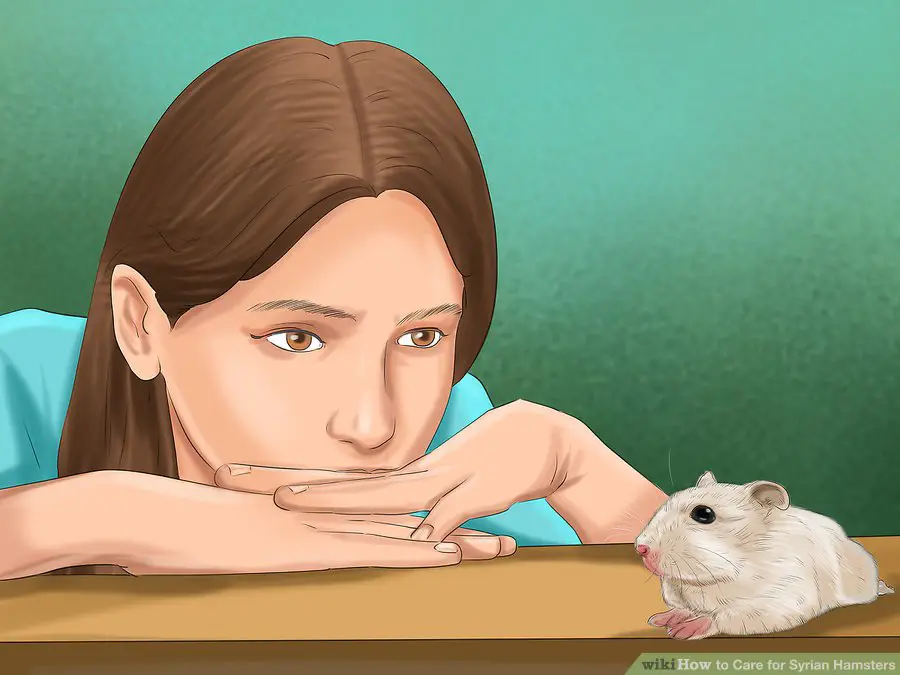
2Start to interact with your hamster. After about 48 hours (2 days), slowly get to know how your hamster likes to be handled. Start by sitting down and talking to the hamster, in a calm, soothing voice, to get it used to your presence. When the hamster is awake and alert (so evening is the best time), try reaching in to stroke it.
- Hamsters are not aggressive by nature and do not usually attack unless provoked. However, they do have poor eyesight, so if your hand smells of food they may bite a finger assuming it’s something to eat. So wash your hands first. For this reason, it is a bad idea to hand feed hamsters, since they can confuse where the smell of the food is coming from and accidentally nibble your finger.
- One option is to place a treat in the cage, (on a spoon) and whilst the hamster is eating his treat, gently stroke him. Take it slowly, let the hamster become used to you.

3Give your hamster time to get used to you before attempting to pick it up. Have short, non-aggressive interactions with the hamster several times a day until your pet is comfortable with you. Once the hamster accepts you stroking it, try scooping it gently into the palm of your hand. This may take a long time with aggressive females, but tame, friendly males will allow you to hold them after just a few days.
- The ideal time to wait before picking up your hamster and taking it out of the cage to play is two to three weeks.
- To hold your hamster, slide one hand under it and cup the other round the front of its body. Ensure you are gentle.
- You should never start by picking your hamster up! Try holding out treats for it. If the hamster is too shy to take it from your hands, just put the treat down and wait for the hamster to take it.
3Feeding Your Hamster
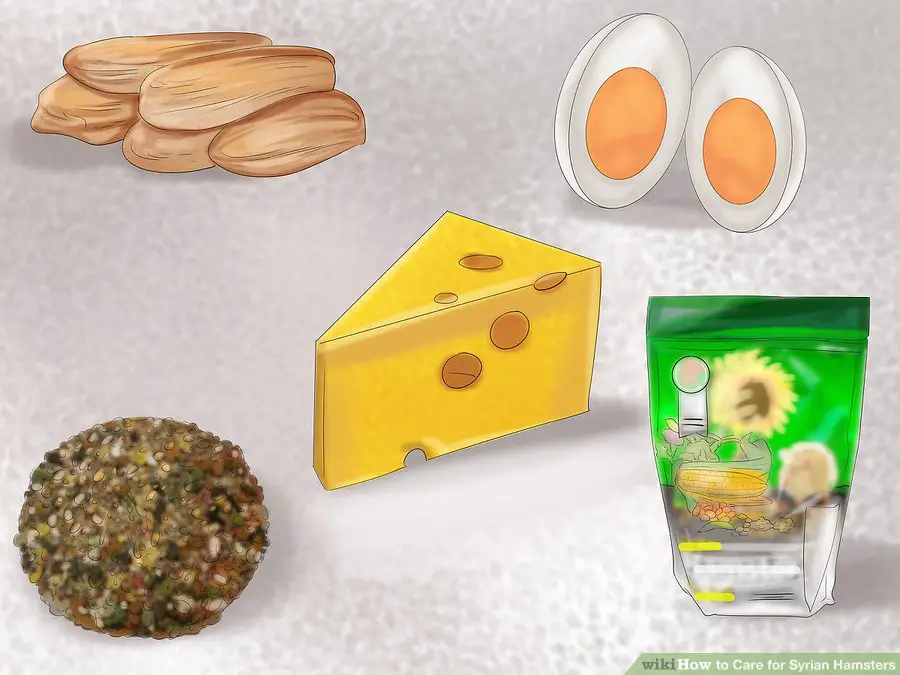
1Choose appropriate foods and treats for your Syrian hamster. Hamsters need to be fed a good variety food, as well as the occasional treat. Commercial brand hamster foods, such as Hazel Hamster (Harry Hamster in the UK), are ideal. Because hamsters are hoarders, give a small quantity that you can be reasonably confident the hamster will eat quickly and not try to stash away.
- Make sure the nutritional values are: 17-22% protein, 4-6% fat, and 8-10% fiber.
- Some experts believe most hamster mixes are a little too low in protein to be perfectly balanced for the average Syrian hamster. It is a good idea to give your hamster the odd treat of hard boiled egg or cheese, cat food, or mealworms. Small bits of cooked chicken or scrambled egg are good sources of protein and may be given daily.
- If the hamster does not take any excess treats away to eat later within 24 hours time, remove any uneaten goodies
- You can see more “Hamster Diet Chart“.
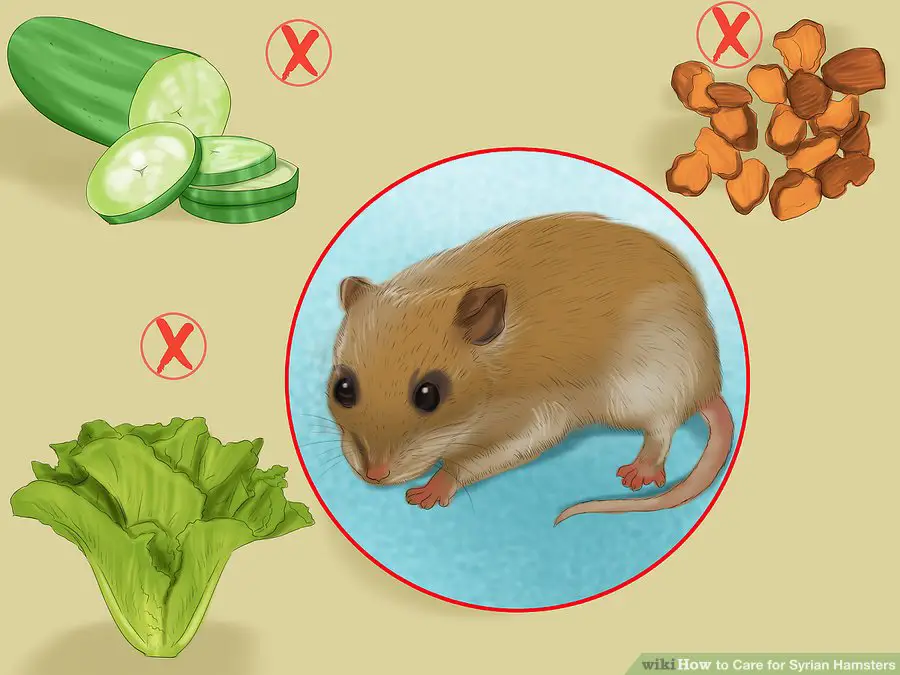
2Avoid feeding your hamster foods that are not good for it. For instance, never give your hamster seeds with husks. The sharp pointed seed husks may hurt the delicate lining of the cheek pouch.
- Also avoid giving foods with a high moisture content (cucumber or lettuce), since these are liable to have a laxative effect on the hamster’s digestive system.
- List Of Acceptable Hamster Food.
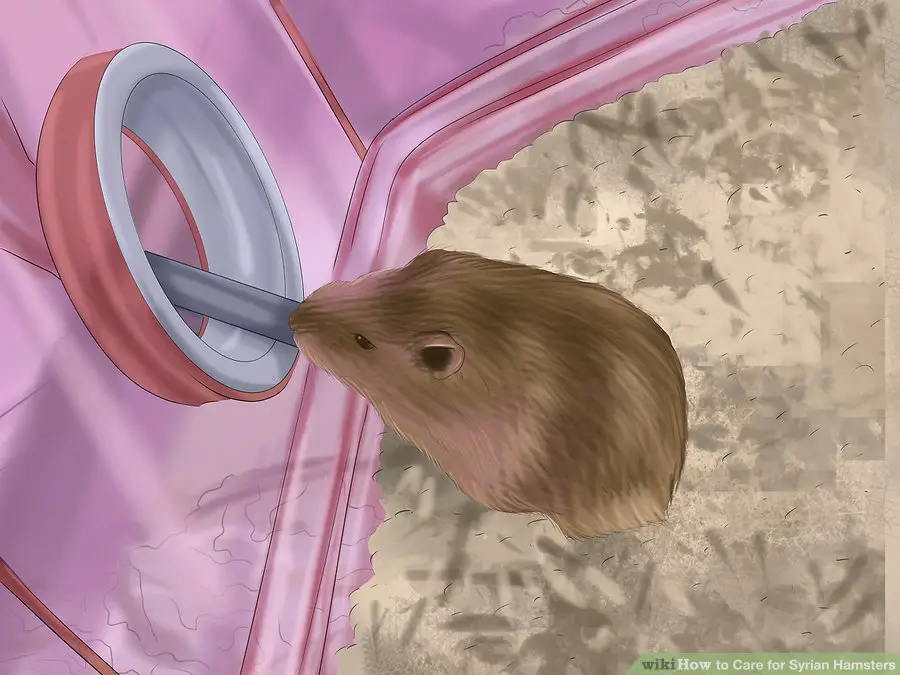
3Provide the hamster with clean, fresh drinking water. Make this available at all times. A sipper bottle is ideal since this doesn’t get contaminated with bedding or food in the same way a bowl does. Make sure to check the water level every day, so that your hamster never gets dehydrated.
- Wash the inside with a bottle brush. It may look clean, but the inside of the bottle will become coated with harmful bacteria.
- Use a hamster approved water bottle.
- Filtered water is best, but tap is fine – as long as you dechlorinate the water, either by using dechlorination liquid/tablets or by leaving the water out in the open over night.
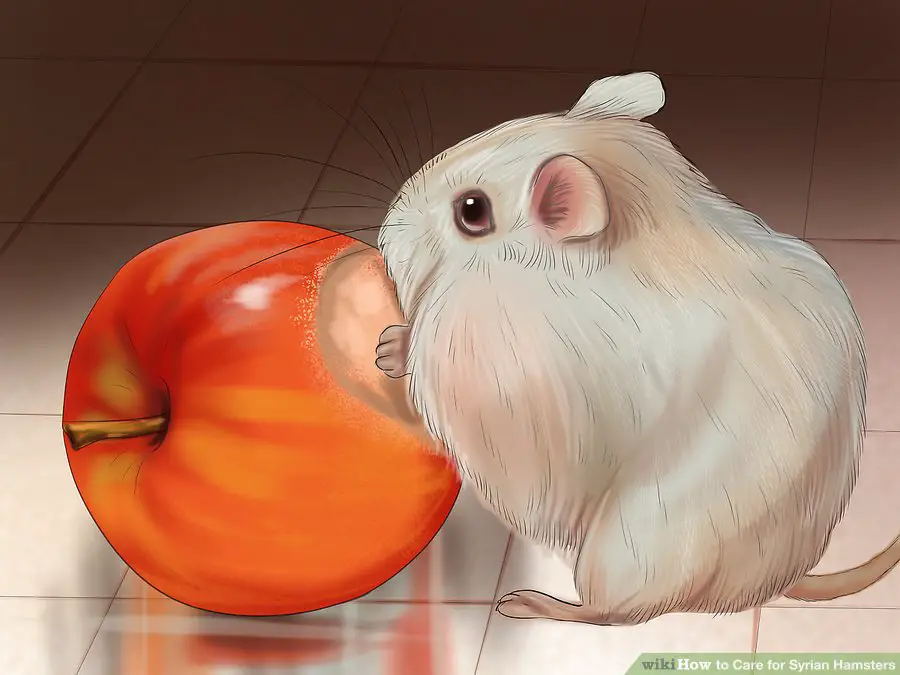
4Provide chews to help file down the hamster’s teeth. This prevents your hamster from having to chew on its cage bars and potentially damaging his or her teeth, and it prevents the teeth from becoming overgrown. To reduce the risk of teeth overgrowing, give your hamster dog biscuits, dry whole wheat macaroni, or wood from orchard trees, such as apple, pear, plum or cherry.
- Provide mineral/salt blocks.
3Caring for Your Hamster

1Keep your hamster’s cage clean. Hamster cages should be cleaned out completely every week to 2-3 weeks, depending on your hamster and needs. They should also be “spot cleaned,” by removing fresh foods and cleaning toilet areas, each day, depending on the size and type of cage. To clean the cage, take the top off and empty all the dirty bedding and wood shavings and old food into a dustbin. Scrape out all the other remains. Go over the cage with a pet-made disinfectant, then dry it with tissues or kitchen roll, if preferred.
- Wash out bowls and water bottle (or bowl) at the same time as cleaning the cage. Dust and rinse all items of the cage. Dry everything and fill the cage with fresh wood shavings, bedding, food, and water. Put all the items back in the cage and clip the top back on. A clean cage makes your Syrian hamster happy and healthy.
- Try giving your hamster a “hamster toilet,” which is a plastic litter pan with a hood that fits snugly into the corner of the cage. Use the special hamster litter which you can purchase from pet stores, and clean the toilet every other day. Hamsters generally catch on quickly as to what the hamster toilet area is for, since instinct tells them to use one corner for toileting, and the confines of the toilet help them to feel secure.

2Relocate the hamster while you clean its cage. Disinfect the cage properly and change the bedding before putting your hamster back in. While you clean the cage, you can put your pet in a play pen have someone supervise it.
- Hamster balls are terrible for hamsters. While some might look like they are enjoying it, they are probably stressed and trying to find a way to get out of it by running around. If a hamster gets thirsty or hungry it would also not be able to tell you, which could be very bad for your small pet.
- Put the hamster in a pen, supervised, so it cannot escape. Cleaning the cage too often can cause stress; this does not mean do not clean your cage, rather, just clean it every other week and remember spot cleaning is your best friend.
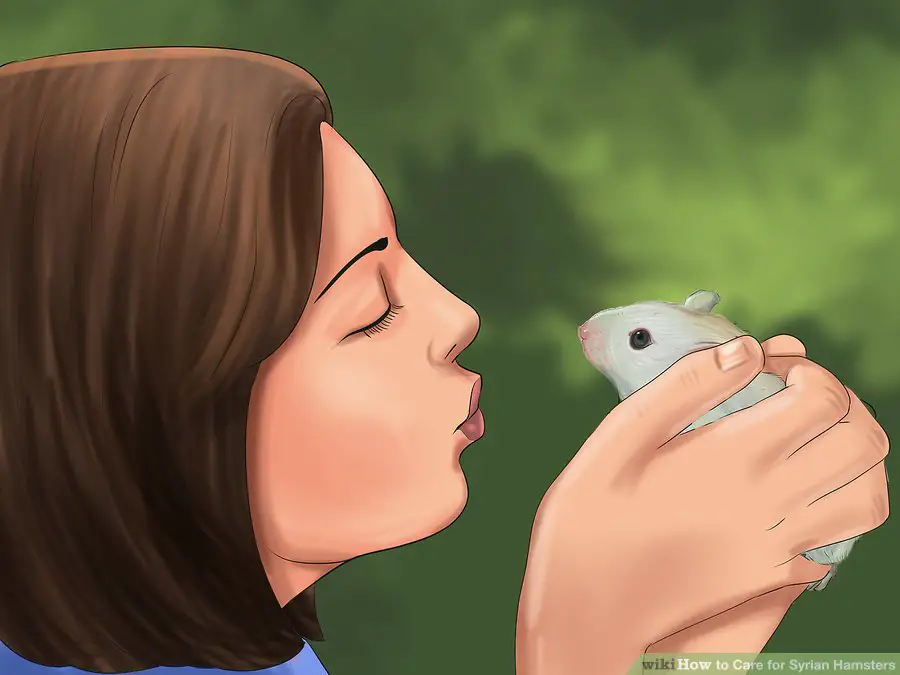
3Give your hamster lots of love. Syrian hamsters are the most friendly and sociable of the hamster family. They should receive attention everyday, but excessive handling can actually cause stress in Syrian hamsters, which can result in bad health. Handle your hamster for 10 minutes at a time, a couple times a day, and then spend time tidying up its cage, watching it run, dig, and burrow.
- Be aware your hamster will be sleepy during the day, and most likely to be active at night. So, the best time to socialize is in the evening.
- Keep your hamster happy with toys. You can buy toys at the pet store or make homemade ones. Never give rubber or non-digestible toys that the hamster could chew small pieces off and swallow. These are likely to cause a bowel obstruction.
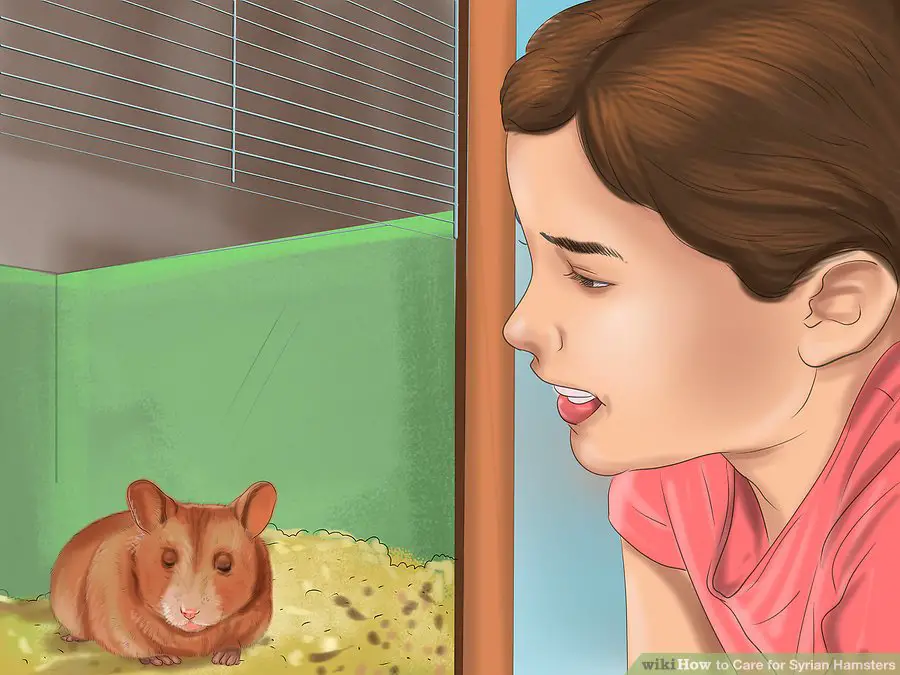
4Take care when waking your hamster. Most hamsters are crepuscular, meaning they are most active at dawn and dusk. If necessary, wake up your hamster slowly to prevent scaring your little friend. Some hamsters can nip if they are woken up roughly. Allow your hamster at least 30 minutes to wake up, let it get something to eat and drink and go potty before taking it out of its cage. (Only do this if it is important, otherwise, never wake up a hamster to play or for any unnecessary reason. Imagine being waked up in the middle of the night to be held.)
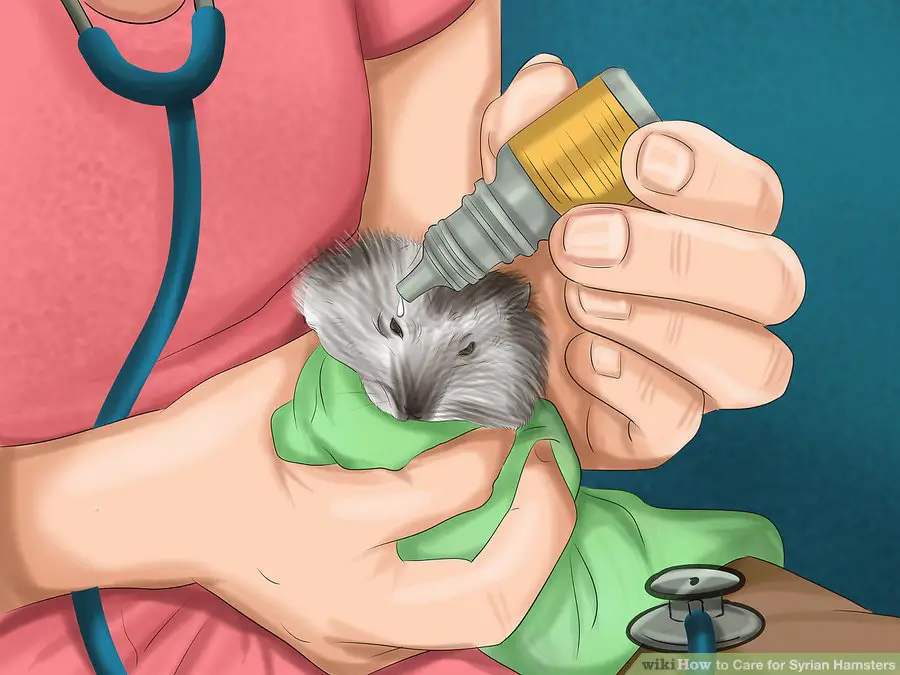
5Visit the vet when needed. Rush your hamster to the veterinarian clinic if the fur under its tail is always wet, if it shows signs of a cold, if it has lumps or bumps on its body, or it has gone off its food, water and playing times completely. In addition, you should take your hamster to the vet if it has watery eyes, has runny droppings (diarrhea), its teeth have broken, or if its claws need clipping.
- Vets have got special clippers for hamster claws and know exactly how to do it. It is safer and better to leave this to the experts rather than trying it by yourself at home. Hamsters can’t run on their wheels very well if they have long claws, since that hurts for them!
Source: wikihow.com
You should read Hamster Diet Chart.
